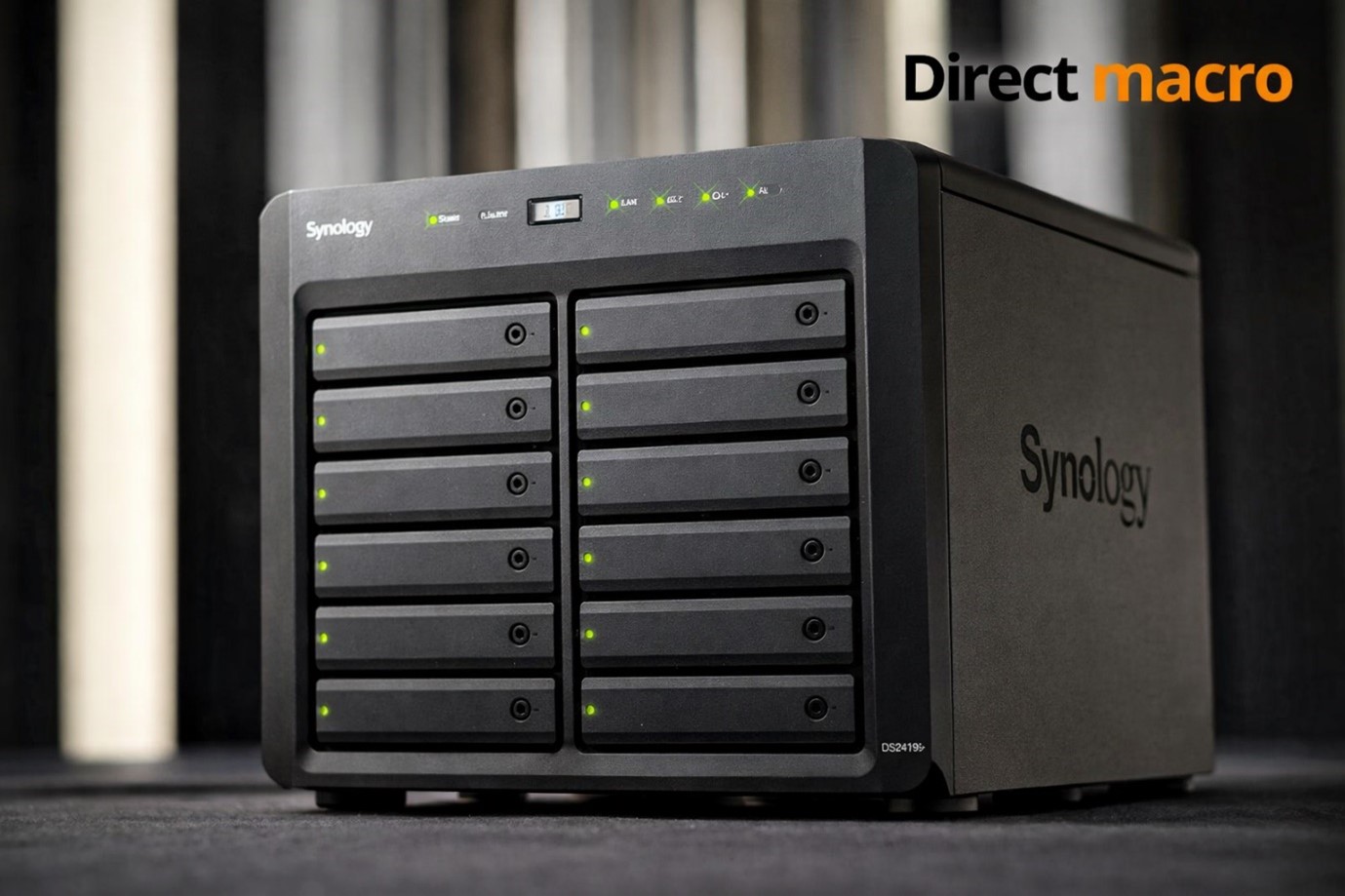Choosing The Best Motherboard For Gaming in 2025
PC is its motherboard since almost 90% of PC hardware components are coordinated directly or indirectly through the motherboard. If not linked to the motherboard, they will link to something that is further linked to the motherboard, building up a whole new system. Therefore, choosing the right motherboard is the key to building the perfect PC of your dreams.
Basically, your motherboard defines the capabilities of what your PC can do and cannot. Therefore, if you wish for a particular level of gaming performance in your PC, you have to get the right motherboard for it. A perfect motherboard offers a smooth gaming experience by perfectly working with the GPU, CPU, and other key components for your gaming performance. Have you been relying on an older version of a motherboard that might no longer provide satisfactory gaming performance? Here are some of the best motherboard for gaming that you should consider if you want to experience a smooth gaming experience in 2025.
Gaming Motherboard
The gaming PC motherboard can also be used for content creation, such as video making and photo editing. These tasks are demanding on the whole system and require the same aspects as gaming.
The construction of the best motherboard for gaming PCsPCs includes signal improvement parts like copper parts and e-glass to circulate the signal among other parts as quickly as possible to reduce lag. Here are the components and peripherals that you would need to ensure a smooth gaming experience.
Things To Consider When Choosing The Best Gaming Motherboard
These components and their versions, factors, sizes, and compatibility matter when you search for the best AMD motherboard or go out to have a look at the best Intel motherboard for gaming. Let us tell you how and why these computer hardware matter.
- Form Factor for Gaming Motherboard: The form factor is key for the best motherboards. It will dictate the size of the gaming motherboard and whether it fits. Motherboards for gaming come in Micro ATX, Mini ITX, Extended ATX (E-ATX), or simply ATX form factors. A larger form factor is considered suitable for a gaming PC motherboard like ATX or E-ATX to house more supporting technologies required for heavy gaming.
- Compatible Memory Technology : Look for a PC motherboard for gaming that supports DDR5 and/or DDR4 RAM because any technology lower than that will not work for contemporary gaming. Also, note that the best PC motherboard for gaming uses DIMM or for laptop uses SO-DIMM.
- Memory Card Slots: The best motherboards for gaming boast more memory card slots than a simple best motherboard. The number can vary from 2 to 8 because it needs more memory to run games.
- RAM Size: By RAM size, we mean the maximum amount of memory a gaming motherboard can support in terms of GB. Modern gaming motherboards can support up to 64 GB at maximum, while some can take up to 32 GB. With more slots, you can install more memory; if money is the constraint, you can do it gradually.
- CPU Socket Type: The CPU socket type will be Intel or AMD processor-specific. Choose carefully and note the processor’s model number to match the motherboard’s socket type.
- USB Port: Look for a gaming motherboard that supports USB 3.1 and 3.0 for speedy data transfer, especially if you connect an external HDD or SDD for gaming purposes. Another benefit of having them is that they are also backwards compatible with USB 2.0 ports.
- Number of USB Ports: The best pc motherboard for gaming have multiple USB ports, as having them is necessary for gamers. Numerous USB ports enable gamers to attach many devices with overloading and require a network hub to connect an external hard drive, controller, or even a VR device.
- Cooling Fan: Select a gaming PC motherboard that supports a PWM (Pulse Width Modulation) for precise speed control and magnetic levitation or fluid dynamic bearings for reduced noise. Neglecting this feature can turn your gaming rig into a furnace.
- Storage Sockets: The Best motherboard for gaming still uses PCIe, but some high-end, latest, best gaming motherboards have an M.2 storage socket appropriate for a solid-state drive. Some former-generation gaming motherboards that still support SATA are compatible with the USB 3.0 interface.
- Built-in Graphic and Sound Card: The best high-end motherboards for gaming already have built-in graphics and sound cards that can complement many tasks, including low-tier gaming. However, it should also have slots to add new ones required for gaming.
- Display Port Option: The best motherboard for gaming should have an HDMI port to connect the high-end smart TV or a Best 4K gaming monitor for the ultimate gaming adventure.
- LAN and WiFi Card Support: Consider a gaming motherboard that supports premium WiFi and LAN cards to support you in online and LAN gaming.
- RGB Color Effect: Though this feature does not affect performance, it is a trend amongst hardcore gamers, and if you are planning on becoming one, you will eventually need it. After all, it’s all about mindset.
- Energy Star Certification: All the best motherboard for gaming has an Energy Star certification to make them safe and eco-friendly among their features and manufacturing.
There are some soft qualities of the best gaming motherboard that are equally important in the selection of the best motherboard. These qualities are;
Overclocking Capability
Many computer components like GPUs, CPUs, and RAMs including the gaming motherboard can overclock beyond their factory setting to enhance performance. Overclocking pushes hardware to run faster than its standard specifications, enhancing gaming, rendering, and computational tasks. So, the best motherboard will have a good overclocking capability but that does not necessarily mean the higher number represents the best motherboard for gaming. Overclocking brings overheating with itself and the best motherboards for gaming have means like excellent cooling systems to combat that. Overclocking significantly improves performance at the price of higher power consumption, increasing the risk of instability or hardware failure and potentially void warranties. Choose a PC motherboard for gaming that balances both.
Comprehensive Software Suite
A software suite optimizes the user experience and functionality of the gaming motherboard without changing its physical specifications. A comprehensive software suite of the best motherboard feature utilities for system monitoring like BIOS updates, RGB lighting control, fan speed management, and overclocking. The user can optimize performance, maintain system health, and personalize the system with the help of these tools. This software suite of the PC motherboard for gaming saves time by providing a UI.
User-Friendly BIOS
A user-friendly BIOS interface enables the firmware of the best motherboard for gaming to be more intuitive, making it accessible to amateurs and experts alike, allowing them to navigate and configure system settings. It has a graphical user interface (GUI) with icons and mouse support, which simplifies the configuration process. One of the main advantages is the intuitive selection of common refinements, one-click overclocking solutions for easier speed increasing and help sections available for different settings which provide explanations. This method simplifies BIOS setup allowing users to optimize their systems, improve performance, and customize settings without having profound technical skills, thereby enhancing the user interface of the motherboard.
Now, onto exploring the best motherboard for gaming;
The Best Motherboard for Gaming
Whether you are looking for the motherboard for your professional work or for a gaming PC, here are some of the best options for you.
The Best Intel Motherboards for Gaming
MSI MAG Z790 Tomahawk WiFi

Tomahawk is one of the best MSI gaming motherboards with good reviews. They don’t have the luxury features found on more expensive boards and instead concentrate on a vital set of features. Tomahawk models should be on your radar if you require a powerful GPU to support a demanding Core i9 13900K CPU but aren’t concerned with extra features.
Specifications:
- CPU support: Intel 12th and 13th Gen
- Socket: LGA 1700
- Size: ATX
- Memory: 4x DIMM, Up to 128GB, DDR5-7200+(OC)
- Expansion slots: 1x PCIe 5.0 x16, 1x PCIe 4.0 x4, 1x PCIe 3.0 x1
- Display ports: 1x DisplayPort 1.4. 1x HDMI 2.1
- USB ports: Up to 1x USB 3.2 Gen2x2, 6x USB 3.2 Gen 2, 6x USB 3.1 Gen 1, 6x USB 2.0
- Storage Options: 4x M.2, 7x SATA
- Network: Intel 2.5G LAN, Intel Wi-Fi 6E
DDR4 is best if you have plenty of DDR4 memory, but DDR5 is best if you need to buy more. The Tomahawk supports four M.2 drives but not PCIe 5.0 SSDs. Would it be nice? Along with a lack of PCIe 5.0 drives, the Z790 platform requires an 8x/8x split between the 16x primary slot and the M.2 slot, making it unnecessary at this time. A good PCIe 4.0 drive will last for years, just like a good PCIe 3.0 drive does and is still relevant.
Instead of using a huge M.2 heatsink like the Gigabyte Aorus Z790 Master, the Tomahawk uses a low-profile design that doesn’t require much surface area. The Z790 Tomahawk has 7 SATA ports. The seven connections alone may make SATA a good choice for massive storage. Some expensive boards include four SATA. The VRM stands out among its price-range competitors.
The MSI Z790 Tomahawk should meet most of your best motherboard for gaming needs. Board builders exploit USB4 and 10G LAN to justify gaming motherboards twice the price of the Z790 Tomahawk. The checklist is complete for most users. Wi-Fi 6E, 2.5G LAN, a robust VRM that can handle 13900K, loads of USB ports, including 3.2 Gen 2×2, a stable BIOS, and a discrete design that fits any build theme. You can continuously upgrade your MSI models with MSI motherboard drivers available on the official website. Do you need more? If you do, expect a price increase.
Gigabyte Z690I Aorus Ultra Plus

We found the Gigabyte Z690I Aorus Ultra Plus to be an affordable, aesthetically pleasing, and competent Z690 ITX motherboard that performed well in our tests. It has two M.2 ports, a premium audio codec, and high-quality 105A MOSFETs to power any CPU—all for roughly $330, which is cheaper than the majority of the best motherboard for gaming. Plus, the design is RGB-inclusive.
Specifications:
- Socket: LGA 1700
- Chipset: Intel Z690
- Form Factor: Mini-ITX
- Voltage Regulator: 13 Phases
- PCIe x16: (1) v5.0
- USB Ports: (1) USB 3.2 Gen 2×2 Type-C (20 Gbps) (3) USB 3.2 Gen 2 (10 Gbps) (2) USB 3.2 Gen 1 (5 Gbps) (2) USB 2.0 (480 Mbps)
- Warranty: 3 years
When we take into consideration the competition, we have the Z690 Phantom Gaming-ITX/TB4 from ASRock, the MEG Z690I Unify from MSI gaming motherboards, and the Asus ROG Strix Z690-I Gaming WiFi 6E. There is no difference between any of these ITX boards; the only variation is the pricing and your requirements. There are at least two SATA connections and two M.2 sockets included in each one, as well as Wi-Fi 6E and 2.5 GbE. There are additional SATA ports on the other boards, but the MSI motherboard has three M.2 sockets. Only a small percentage of consumers would be able to tell the difference between the ASRock board and other boards in terms of audio quality.
Gigabyte Z690I Aorus Ultra Plus is a product that we find appealing. It resolves issues that were present with the PCIe slot of the previous version and provides us with an SKU that is generally well-rounded and undoubtedly offered at a reasonable price. In addition to this, it is the only Z690-based ITX board that comes with RGB LEDs already built in, which will further help it stand out in your case. Those who require more than two SATA drives will be required to search elsewhere; however, the Ultra Plus is the alternative best budget motherboard in Z690 Mini-ITX that is currently available for the price.
The Best AMD Motherboards
ASRock’s X670E Taichi

For those looking for a mid-range motherboard, ASRock’s X670E Taichi is an appealing and well-rounded option. ASRock’s X670E Taichi is the best AM5 motherboard for gaming available to you for the price of $468.60. It has multiple storage options, including eight SATA connectors, four M.2 sockets, and a large number of USB ports, two of which are USB4 Type-C (40 Gbps). The results of our benchmark testing demonstrated that there is no cause for concern with regard to the performance of this board or its ability to increase the clock speed.
Specifications:
- Socket: AM5
- Chipset: X670E
- Form Factor: E-ATX
- Voltage Regulator: 27 Phase (24x 105A SPS MOSFETs for Vcore)
- PCIe x16: (2) v5.0 (x16, x8/x8)
- USB Ports: (2) USB4 Type-C (40 Gbps) (5) USB 3.2 Gen 2 (10 Gbps) (3) USB 3.2 Gen 1 (5 Gbps)
- Warranty: 3 years
We recently compared another top-end MSI MEG X670E ACE motherboard with ASRock’s X670E Taichi, and the X670E Taichi turns out to be the best choice in many aspects.
Firstly, its price is far lower than MSI’s X679E ACE while it provides nearly all of the major features for AMD’s most recent platform.
If you have the financial means to spend this much on a gaming motherboard, the X670E Taichi is an excellent choice among its contemporaries and the best AMD motherboard that can be purchased for approximately $500. It is important to keep in mind that if you do not want a large amount of PCIe bandwidth, you can save yourself at least one hundred dollars by selecting an ASROCK MB B650E model. Many of these models still contain the essential characteristics that the majority of gaming PC builders are looking for.
Gigabyte B650E Aorus Master

The B650E Aorus Master has the appearance to be the center focus of your build, and it comes at a price point that is more affordable than many alternatives that are based on the X670.
It is one of the greatest options that are available for B650E along with Gigabyte MB AMD B650E, and you should put it on your list if you are planning to construct a Ryzen 7000 system and you do not want the additional bandwidth that X670 provides. In addition to that the, the B650E Aorus is the best gaming motherboard for Ryzen 9 3950.
Specifications:
- Socket: AM5
- Chipset: AMD B650E
- Form Factor: ATX
- Voltage Regulator: 20 phases
- PCIe x16: (1) v5.0 (x16, x8) (1) v4.0 (x4) (1) v4.0 (x2)
USB Ports: (1) USB 3.2 Gen 2 (10 Gbps) Type-C (4),
USB 3.2 Gen 2 (10 Gbps) (4) USB 3.2 Gen 1 (5 Gbps) (4) USB 2.0 (480 Mbps) - Warranty: 3 years
The B650E Aorus Master best motherboard for gaming from Gigabyte is a premium, well-rounded gaming motherboard that is available at a price that is substantially lower than what you would have to pay for alternatives to the X670E. It does blur the line between the full-featured X670 chipset and the B650E chipset, but it includes all that the B650E has to offer, with the exception of a few fast USB connections in this particular instance. A price of $400 is normal for this particular variant. There are four PCIe 5.0 M.2 slots, nine USB ports on the rear IO, and the same powerful VRMs as are found on the gigabyte X670E Aorus Master, which is a far more expensive motherboard. However, the Gigabyte X670E AORUS Master is the best motherboard for gaming Ryzen 7 7800x3d.
Asus ROG Crosshair VIII Dark Hero

The ROG Crosshair VIII Dark Hero from Asus aspires to be your final requirement for an AM4 motherboard. But how can you differentiate the best motherboard for gaming from mainstream motherboards? Things like features, a stable and optimized BIOS, price-to-quality ratio, and attractive design are vital, but sometimes it’s more about intangibles. There are instances when it’s just that the item works.
Specifications:
- CPU support: AMD Ryzen 5000 Series / 4000 G-Series / 3000 Series /
3000 G-Series / 2000 Series / 2000 G-Series - Socket: AM4
- Size: ATX
- Memory: 4x DIMM, Up to 128GB, DDR4-4866 (OC)
- Expansion slots: 2x PCIe 4.0 x16, 1x PCIe 3.0 x16, 1x PCIe 4.0 x1
- Video ports: N/A
- Rear USB: 4x USB 3.2 Gen1, 8x USB 3.2 Gen2 (1x USB Type-C)
- Storage: 3x M.2; 8x SATA
- Networking: 802.11ax 2.4Gbps Wi-Fi; Intel I211-AT 1G & Realtek RTL8125 2.5G LAN
A delicate design distinguishes the Dark Hero. It may be boring. With current gaming motherboards being more discrete with RGB, we may have reached ‘Peak RGB’. Gigabyte and MSI motherboards are priced higher than the Dark Hero. Compared to the MSI Godlike and Gigabyte Aorus Extreme, at a price of $400, it is the best affordable motherboard for gaming.
ATX board layouts are common today. Mindfully placed above the PCIe slot is the primary M.2. Second bottom slot has a heatsink. You can reach the sockets without removing the heatsink. We also like the lack of a chipset cooling fan. With upgraded Hero VRM, now matches other premium X570 boards with 90a power stages instead of 60a. This board will take LN2 benchmarks well, even from overclockers and the heatsinks are bulky.
A packed rear IO. Eight USB 3.2 Gen 2 ports, one Type-C. Four USB 3.2 Gen 1 ports join them. S/PDIF audio connectors, BIOS clean and flashback buttons, and LAN and WiFi antenna ports are also present. Preinstalled IO shields are now standard on the best motherboard for gaming.
The Crosshair VIII Dark Hero is one of the greatest AM4 motherboards we’ve used, but we’d have to test hundreds more to say so. The Dark Hero may become a legendary ROG motherboard with time and user input, but we wouldn’t bet against it.
Asus ROG Strix B550-E Gaming

Although it shares a price point with many X570 motherboards, the Asus ROG Strix B550-E is a high-end model that comes with all the bells and whistles you’d expect from Asus’ Republic of Gamers lineup. 14+2 power stages, M.2 heatsinks, and backplates already installed are what we are referring to. In addition to Intel 2.5Gb ethernet, you also receive Wi-Fi 6 wireless networking. Plus, of course, RGB LEDs.
Specifications:
- CPU support: AMD 3rd and 4th Gen Ryzen
- Socket: AM4
- Size: ATX
- Memory support: 4x DIMM, up to 128GB, up to DDR4-4600
- Expansion slots: 2x PCIe 4.0 x16, 1x PCIe 3.0 x4
- Storage: 2x M.2, 6x SATA 6Gbps
- Networking: Intel Wi-Fi 6, Intel 2.5Gb ethernet, Bluetooth 5.1
- Rear USB: 3 x USB 3.2 Gen 2, 4 x USB 2.0
The Strix seems stronger when overclocked. AMD’s free-market capitalism approach to clocking pretty much any CPU by allowing super-simple core ratio changes makes it nearly ridiculous not to try. Asus’ sleek and familiar BIOS interface lets overclockers access the core ratio and most other settings on the Strix B550-E. You can increase core ratios and let the board figure out the specifics or manually adjust voltages and timings.
Allowing the board to conduct the delicate brain work overclocks our AMD Ryzen 3 3100 quad-core test chip to 4.2GHz on all cores. The Ryzen 3100’s standard boost clock is 3.9GHz, a 300MHz bump. Which is noteworthy but not great. The cheaper MSI motherboard outperforms the other B550 boards in pure performance tests. Asus can overclock better, but it uses more plug power overall. The Asus ROG Strix B550-E is the best gaming motherboard for Ryzen 9 3950, making it an easier choice for mainstream buyers.
FAQs
What is the best motherboard for gaming?
The best motherboard for gaming consists of expanded memory slots, increased RAM, graphic card support, CPU socket compatibility, and more. Considering those factors, the Asus ROG Strix B550-E, ROG Crosshair VIII Dark Hero, Gigabyte Z690I Aorus Ultra Plus, and MSI motherboard MAG Z790 Tomahawk WiFi are some of the best motherboards for gaming.
What are the best motherboards for first-time PC builds?
Two high-quality PC motherboards for gaming the MSI MAG Z750 Tomahawk WiFi for Intel and the Gigabyte B650E Aorus Master for AMD are designed for the first PC builders. They offer an optimum balance of features, performance, and installation ease.
Which motherboard is most likely the easiest to configure?
The Asus ROG Strix B550-E Gaming is probably the simplest to configure with its BIOS interface that is easy to use, all-round software suite, and intuitive setup that ensures that it is suitable both for beginners and experienced users.
What should I buy first, CPU or motherboard?
CPU is usually the first system component to go for one reason, it determines the motherboard’s required socket and chipset compatibility. The process leads you to the motherboard that will meet your performance needs and future upgrade options.
What is the most popular motherboard size?
The ATX is the most common best motherboard size for gaming thanks to its compatibility, feature set and expansion capabilities that provide a comfortable fit for standard to high-end gaming systems.
Do you need advice on buying or selling hardware? Fill out the form and we will return.

Sales & Support
(855) 483-7810
We respond within 48 hours on all weekdays
Opening hours
Monday to thursday: 08.30-16.30
Friday: 08.30-15.30








